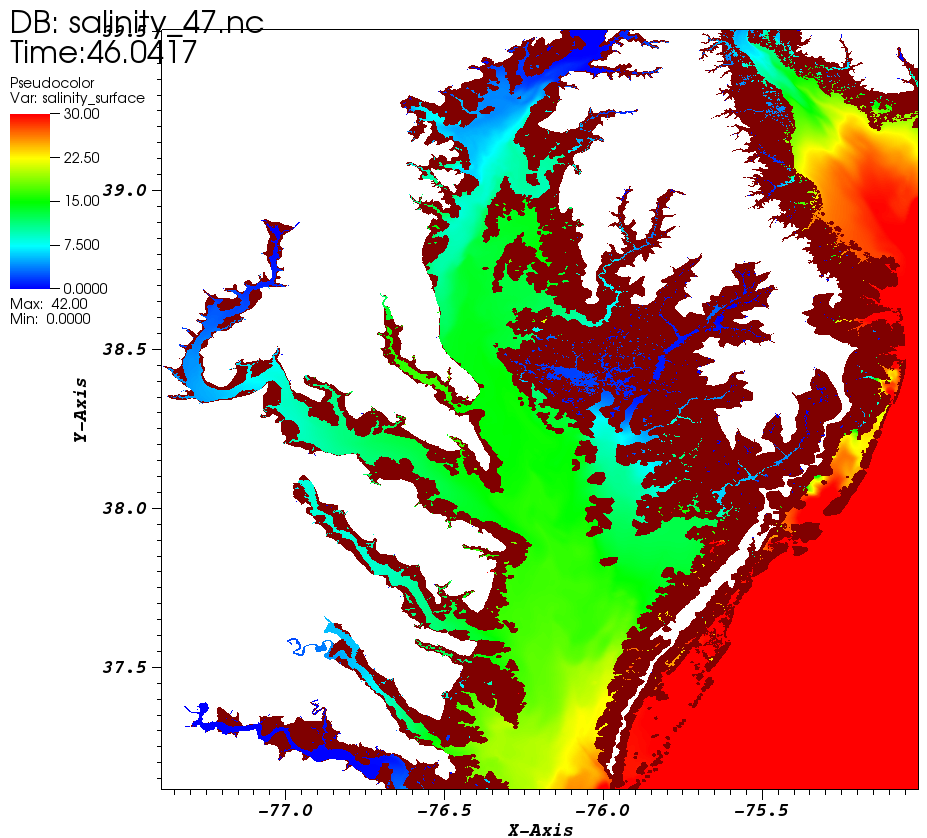Known issues
Freshwater injection stuck near injection place¶
This can happen with the combined use of (1) point source/sink (if_source=1); (2) LSC2 with 1-2 layers near
injection places; (3) baroclinic model. The main symptom is that the freshwater seemingly gets stuck near the
injection points and does not flow out as expected.
The reason is that insufficient number of vertical layers cannot properly set up an exchange flow (that requires stratification), and as a result, the fresh/salt water interface oscillates instead of tilting as expected. Some work-arounds are:
- Change to open boundary condition approach
- Better salinity initial condition. If the salt intrusion should never reach the injection place, create a freswater zone near the injection in the I.C.
- Use more vertical layers near injection (one way to do this is to deepen the local depths to allow for more layers)
- Nudge (inu_tr(2)=1 or 2) strongly in a region near injection
Numerical dispersion with WENO¶
The 3rd-order WENO scheme has numerical dispersion that needs to be controlled, usually by adjusting epsilon[12]
in param.nml. This approach usually works well. Under some circumstances, e.g. watershed in the compound flooding cases, this
adjustment is not enough, especially if hybrization with ELM transport is used (ielm_transport=1). This is
because ELM tracer results may introduce 'shocks' to the local WENO stencil, which in turn generate disperision.
In those cases, the users need to adjust tvd.prop to make some areas upwind as well to ensure monotonicity, because
upwind scheme handles shocks well.
Figure 1 shows the result of disperion symptom from WENO, in the form of high salinity in some upriver
regions of Chesapeake Bay. Higher-order WENO, 1st-order upwind and ELM solvers are applied in adjacent
elements in close proximity in those upriver regions
(note that h_tvd=5m in this case). Making those upriver elements upwind via tvd.prop resolves this issue; cf. Fig. 2.
There are scripts in Utility/ that can be used to create appropriate tvd.prop for cross-scale applications.

